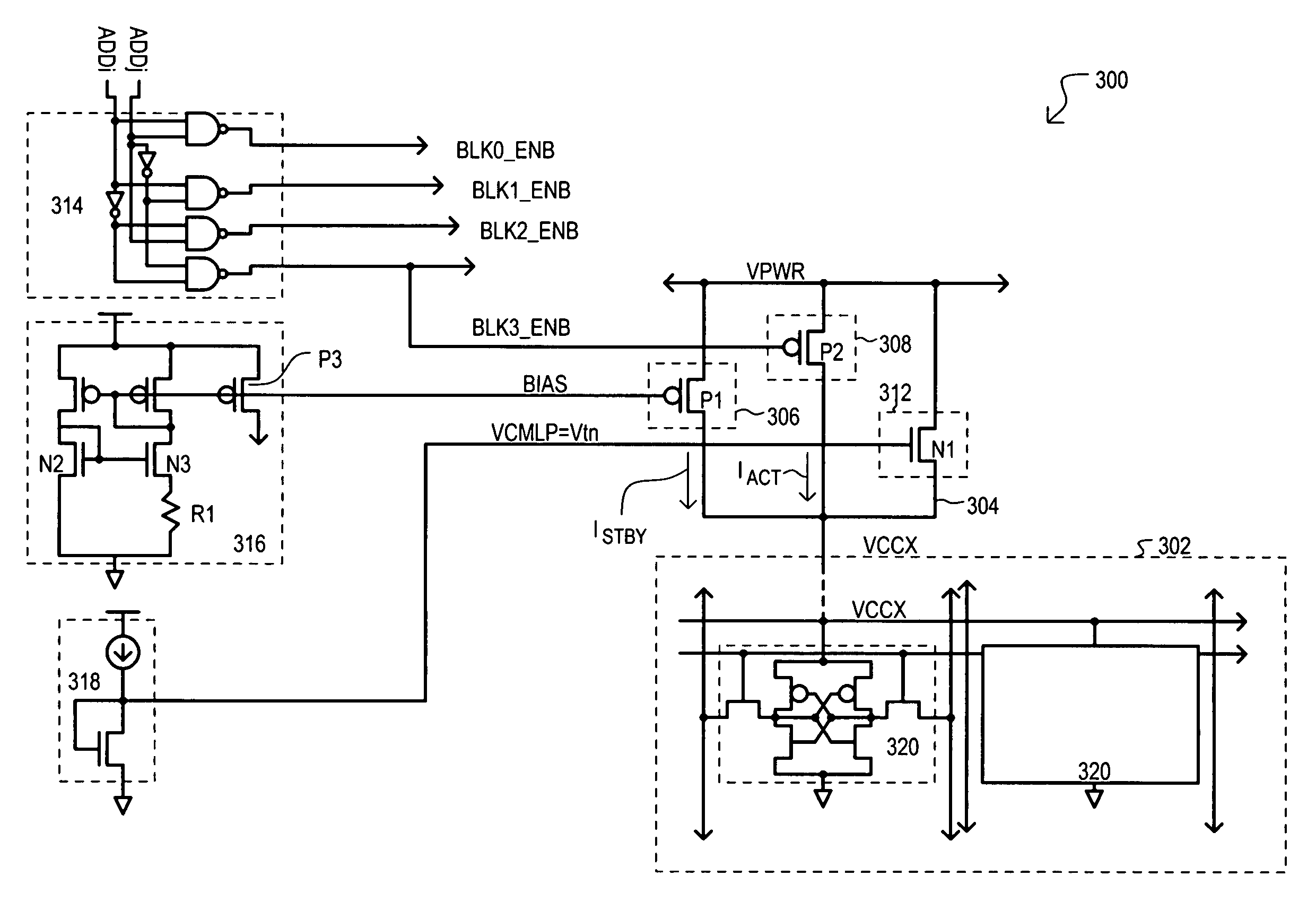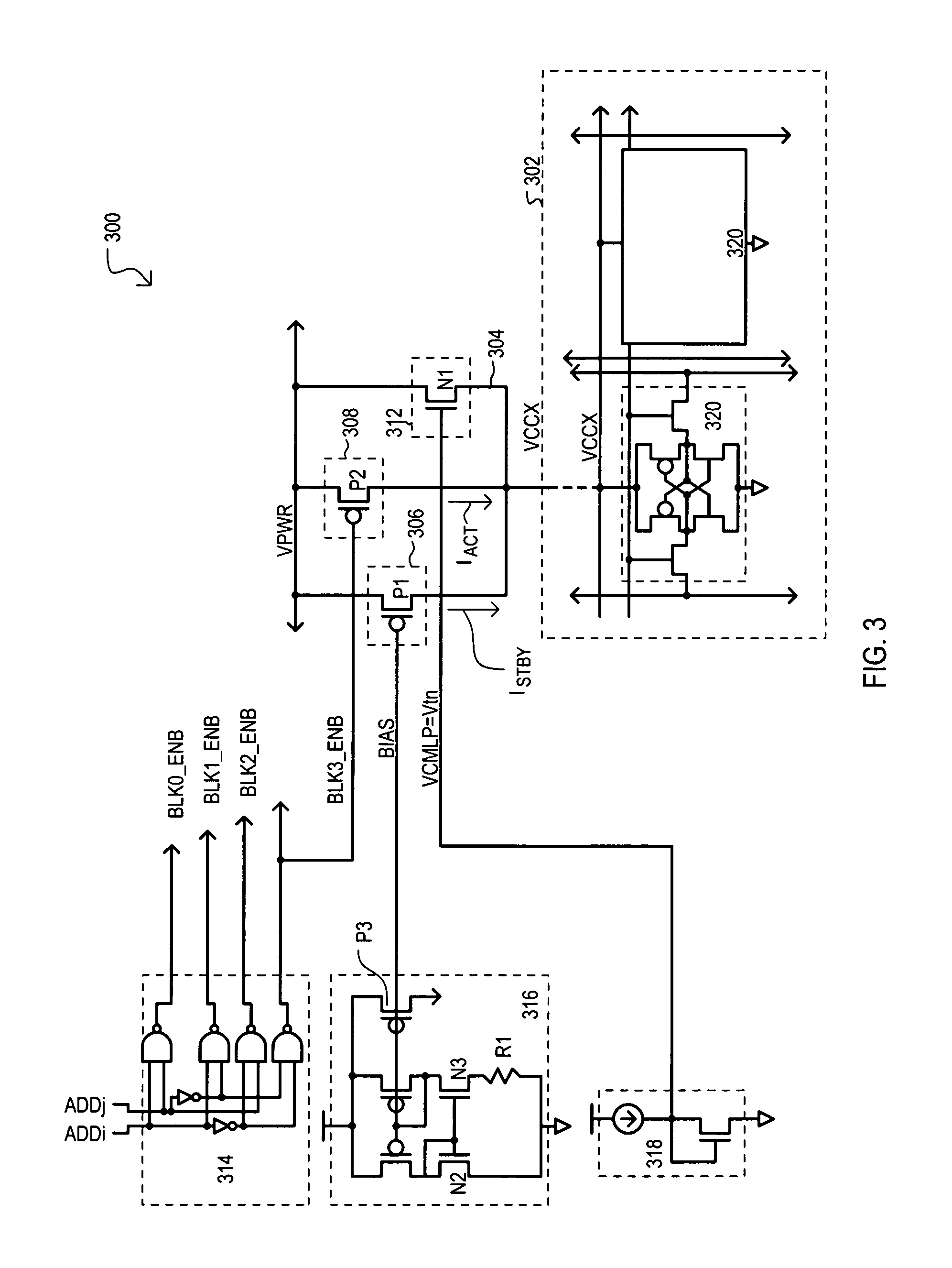Current source architecture for memory device standby current reduction
a memory device and current source architecture technology, applied in the field of memory devices, can solve the problems of data retention, additional circuits (e.g., charge pumps and the like) that may be necessary to generate the back-up, and may not be sufficient for smaller sized technologies, and achieve the effect of reducing the standby curren
- Summary
- Abstract
- Description
- Claims
- Application Information
AI Technical Summary
Benefits of technology
Problems solved by technology
Method used
Image
Examples
first embodiment
[0059]Referring now to FIG. 1, a memory device is set forth in a block schematic diagram and designated by the general reference character 100. A memory device 100 can include a memory cell block 102 with a number of memory cells. A memory cell block 102 can receive power at a block supply node 104.
[0060]A standby current source 106 and an active current source 108 can be situated between a power supply voltage node 110 and block supply node 104. An active current source 108 can provide an active current IACT in an active mode of operation (e.g., when memory cells are accessed for a read / write operation).
[0061]Standby current source 106 can provide a constant or regulated standby current ISTBY. Such a standby current ISTBY can be maintained at, or preferably above a minimum data retention current. It is understood that as a regulated current, ISTBY can be supplied to memory cell block 102 without regard to a voltage VCCX at supply node 104. In this way, the embodiment differs from ...
third embodiment
[0076]Referring now to FIG. 3, a memory device 300 is set forth in a detailed schematic diagram. FIG. 3 includes some of the same general sections as FIG. 2. Thus, like sections will be referred to by the same reference character but with the first digit being a “3” instead of a “2”.
[0077]In the example of FIG. 3, a memory cell block 302 may include six-transistor (6-T) type static random access memory (SRAM) cells 320 having p-channel device coupled to a block supply node 304. It is understood that the present invention should not necessarily be limited to any particular type of memory cell.
[0078]FIG. 3 also shows a particular type of a first reference circuit 316 and second reference circuit 318. A first reference circuit 316 can be a beta multiplier circuit that generates a reference current Iref that follows the relationship:
Iref=(nkT / Q)1n{m} / R
where kT / Q is the thermal voltage, m is the ratio between n-channel devices (N2 and N3) forming the current mirror within the reference...
PUM
 Login to View More
Login to View More Abstract
Description
Claims
Application Information
 Login to View More
Login to View More - R&D
- Intellectual Property
- Life Sciences
- Materials
- Tech Scout
- Unparalleled Data Quality
- Higher Quality Content
- 60% Fewer Hallucinations
Browse by: Latest US Patents, China's latest patents, Technical Efficacy Thesaurus, Application Domain, Technology Topic, Popular Technical Reports.
© 2025 PatSnap. All rights reserved.Legal|Privacy policy|Modern Slavery Act Transparency Statement|Sitemap|About US| Contact US: help@patsnap.com



